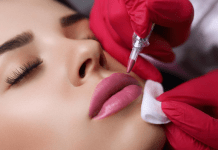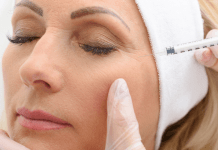What Is Dermatitis? Symptoms, Treatment, and Prevention
What Is Dermatitis? Symptoms, Treatment, and Prevention
What is dermatitis?
Dermatitis is known as skin inflammation. The skin will typically appear dry, swollen, and red. The condition can have many causes, but it’s not contagious.
It can be uncomfortable for some people. How itchy your skin may feel can range from mild to severe.
Certain types of dermatitis can last a long time, while others may flare up, depending on the season, exposures, or stress, and many other reasons.
Some types are more common in children, and others are more common in adults. You may find relief from the disease with the laser treatment.

Symptoms:
The symptoms of dermatitis range from mild to severe and will look different depending on what part of the body is affected with the disease. Not all people experience all the symptoms.
In general, the symptoms of dermatitis may include:
- Rashes
- Blisters
- Dry, cracked skin
- Itchy skin
- Painful skin, with stinging or burning
- Redness
- Swelling
Types of dermatitis:
Here are the most common types:
Atopic dermatitis or eczema:
is usually inherited and develops during infancy. Someone with eczema likely has rough patches of dry, itchy skin.
Contact dermatitis:
Occurs when a substance touches your skin and causes an allergic reaction or irritation. These reactions can develop further into rashes that burn, sting, itch, or blister.
Dyshidrotic dermatitis:
Skin can’t protect itself, resulting in itchy, dry skin, often with small blisters. This occurs mainly on the feet and hands.
Seborrheic dermatitis:
It is also known as cradle cap in babies, is most common on the scalp. It can cause scaly patches, red skin, and dandruff, and it can also occur in other areas of the skin, such as the face or chest.
Causes:
The causes depending on the type of dermatitis:
When you come in direct contact with an irritant or allergen. Common things that cause allergic reactions include detergents, cosmetics, nickel, poison ivy, and oak.
Also caused by a combination of factors like dry skin, environmental setting, and bacteria on the skin.
It is often genetic, as people with eczema often have a family history of eczema, allergies, or asthma.
Fungus in the oil glands. It tends to get worse in the spring and winter.
Poor circulation in the body, most commonly the lower legs and feet.
Stress.
Hormonal changes.
The environment.
Irritating substances.
Risk Factor:
Factors that increase your chances of getting the disease include:
- Age
- The environment
- A family history of dermatitis
- Health conditions
- Allergies
- Asthma
Some factors increase your risk for dermatitis more than others. For example, frequent washing and drying of hands will strip your skin’s protective oils and change its pH balance.

Treatment:
Laser therapy for dermatitis that delivers a concentrated beam of ultraviolet light may help ease a hard-to-treat a small study suggests.
Specifically, a device called the 308-nm excimer laser is approved in the world for treating atopic dermatitis and certain other skin conditions, including psoriasis and vitiligo.
It works by emitting a concentrated beam of ultraviolet B (UVB) light directly to patches of affected skin, avoiding the healthy surrounding skin.
UVB light has long been used to treat some cases; it is thought to help by quelling the exaggerated immune response causing the skin inflammation.
The purported advantage of the excimer laser over traditional UVB therapy is that it more precisely targets the problem areas of the skin.
Some Facts:
While dermatitis isn’t considered a serious medical condition, excessive scratching can lead to open sores and infections. These can spread, but they rarely become a life-threatening disease.
You can prevent or control potential flare-ups with the treatment. You may find the most relief in sticking to the treatments your doctor has prescribed.
Prevention:
Awareness is the first step in avoiding the disease. You’ll want to avoid contact with allergens or substances that cause rashes, such as poison ivy.
You’ll want to avoid scratching the affected area. Scratching can open or reopen wounds and spread the bacteria to another part of your body.
Tanning Treatment/Removal in Delhi:
Laser tanning removal in Delhi involves exposing the damaged skin to laser light and the procedure eliminates the need for medication and almost always has immediate results.
Anti Aging Treatment in Delhi:
We are experts in helping you rejuvenate and enhance your skin and to maintain a youthful and healthy appearance with our range of non-invasive treatments.







 WhatsApp us
WhatsApp us